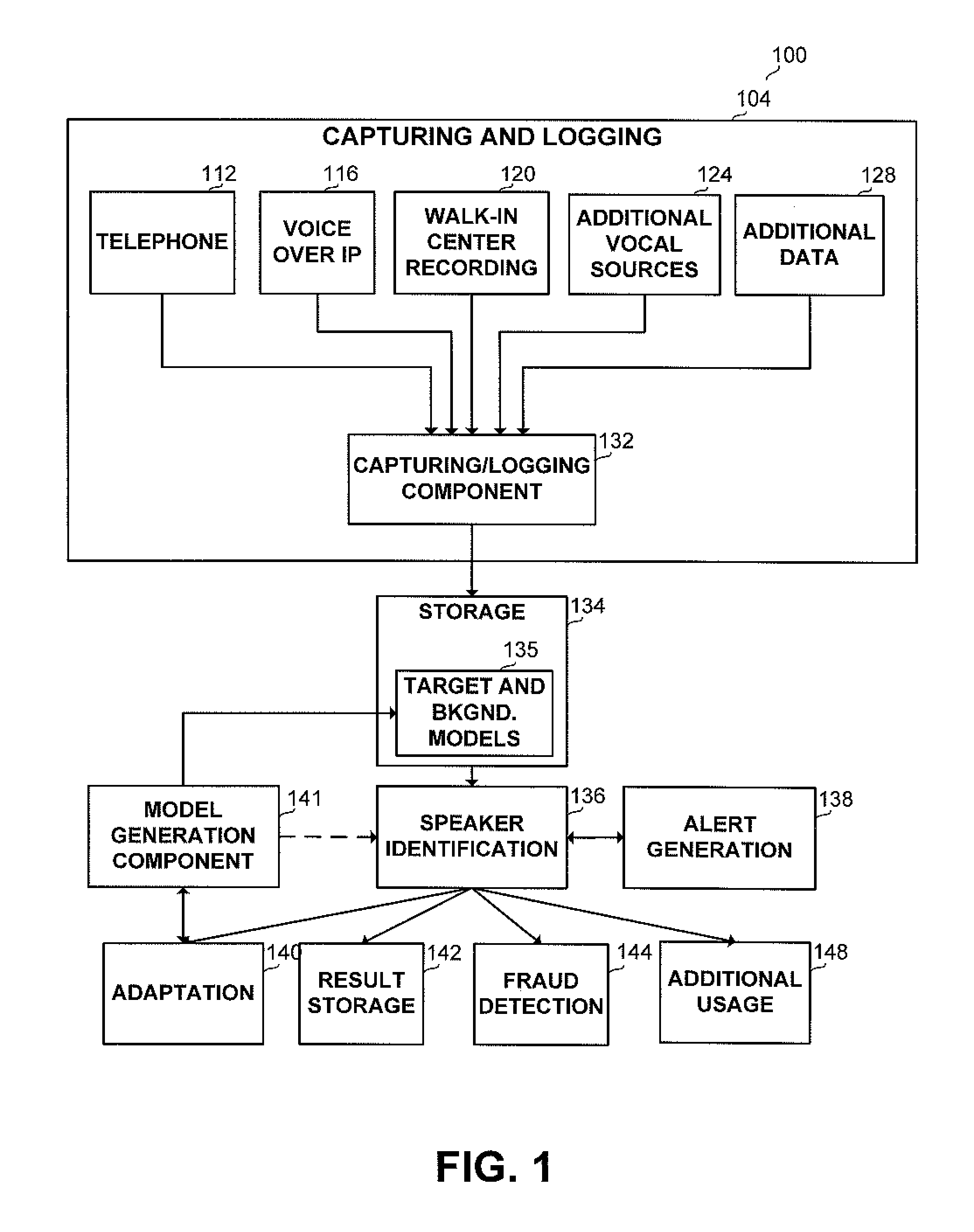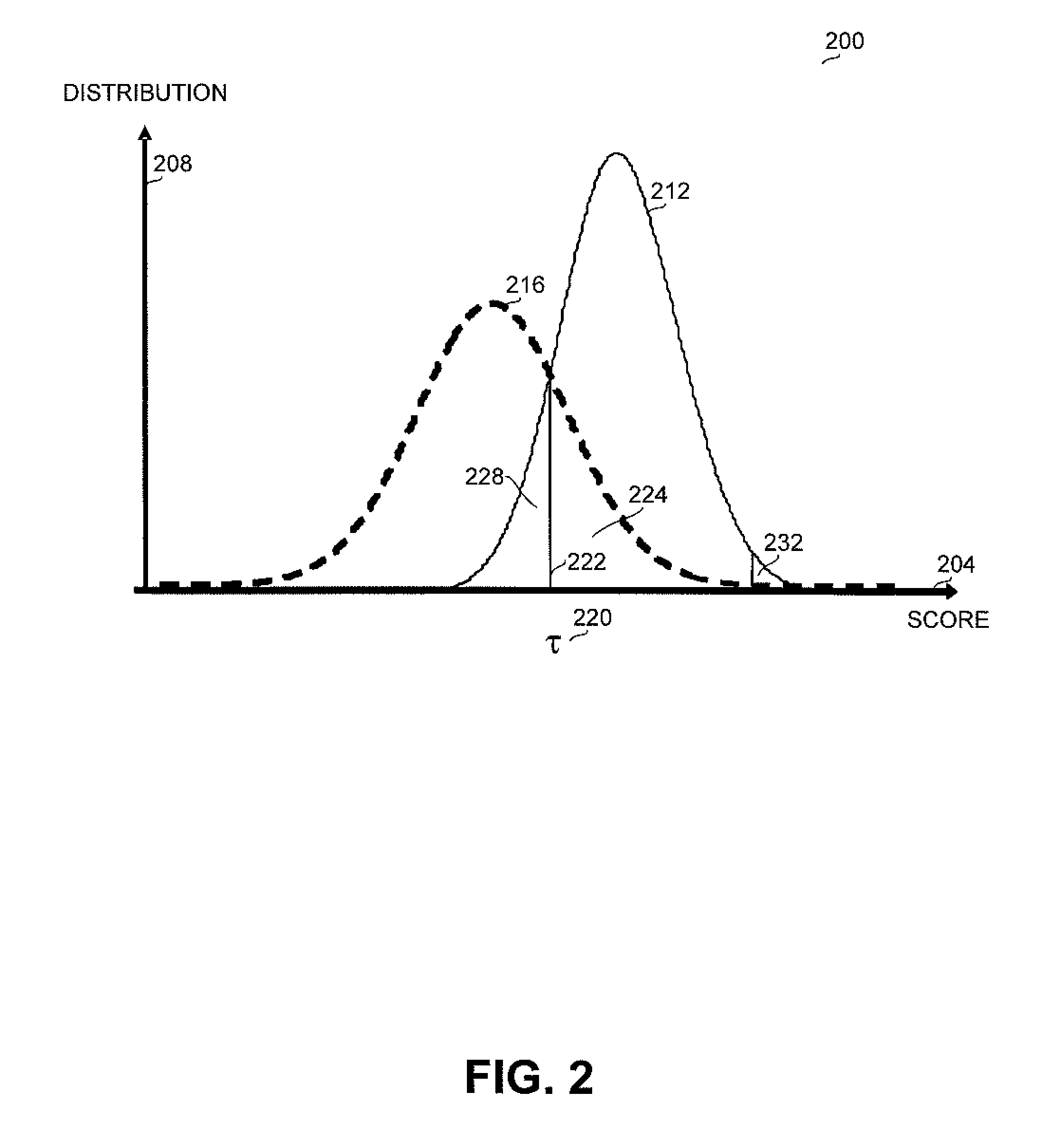Method and apparatus for large population speaker identification in telephone interactions
a speaker identification and large-scale technology, applied in the field of speaker identification, can solve the problems of confusion error, imposing additional difficulties to those handled in the academic field, and the complexity of open-set identification naturally increases, and the difficulty of real-life speaker identification is increased
- Summary
- Abstract
- Description
- Claims
- Application Information
AI Technical Summary
Benefits of technology
Problems solved by technology
Method used
Image
Examples
Embodiment Construction
[0021]The present invention overcomes the disadvantages of the prior art by providing a novel solution which enhances and adds to the capabilities of currently available methods and apparatuses for open-set speaker identification. The method involves exercising the steps known in the art for speaker identification, although the steps may be implemented in an enhanced manner, and additional steps. The steps known in the art include preliminary steps and on-going steps. The preliminary steps comprise building a model for each voice in the target set and building one or more background models. The ongoing steps comprise: extracting features from the tested voice; matching the tested voice against all target models; choosing the target model for which the highest match was handled; and determining whether said highest match exceeds a predetermined threshold, so that the tested voice is associated the with the target set. The additional steps, aimed at enhancing the process and the resul...
PUM
 Login to View More
Login to View More Abstract
Description
Claims
Application Information
 Login to View More
Login to View More - R&D
- Intellectual Property
- Life Sciences
- Materials
- Tech Scout
- Unparalleled Data Quality
- Higher Quality Content
- 60% Fewer Hallucinations
Browse by: Latest US Patents, China's latest patents, Technical Efficacy Thesaurus, Application Domain, Technology Topic, Popular Technical Reports.
© 2025 PatSnap. All rights reserved.Legal|Privacy policy|Modern Slavery Act Transparency Statement|Sitemap|About US| Contact US: help@patsnap.com



